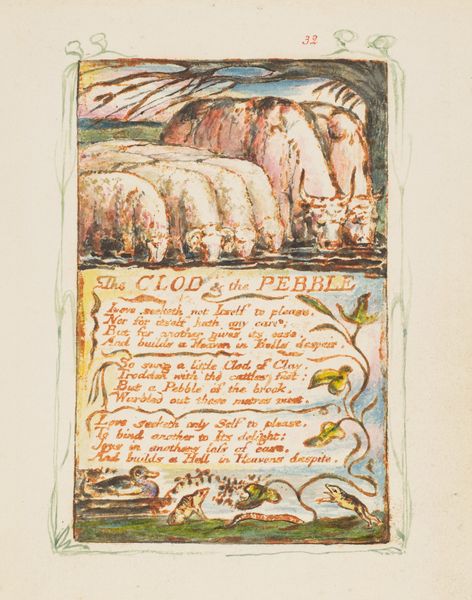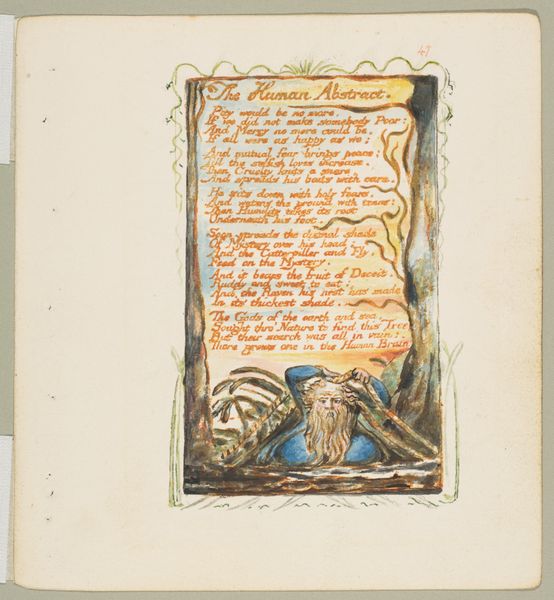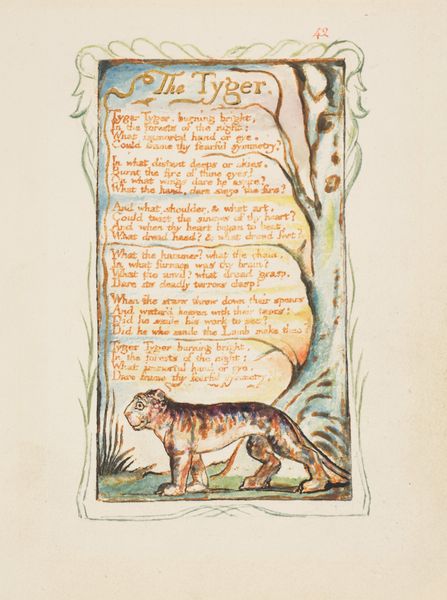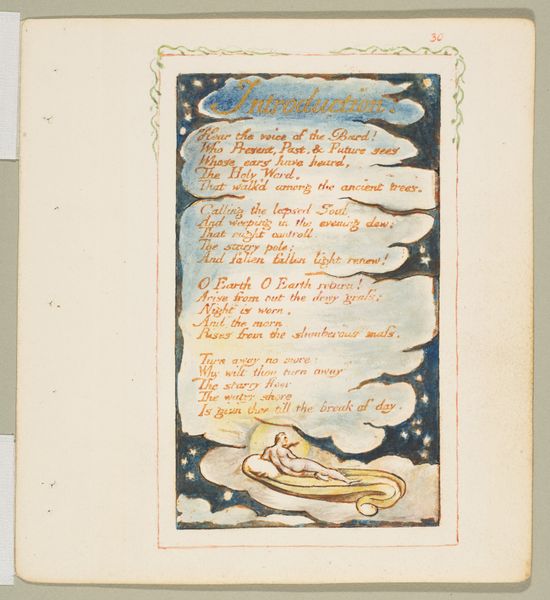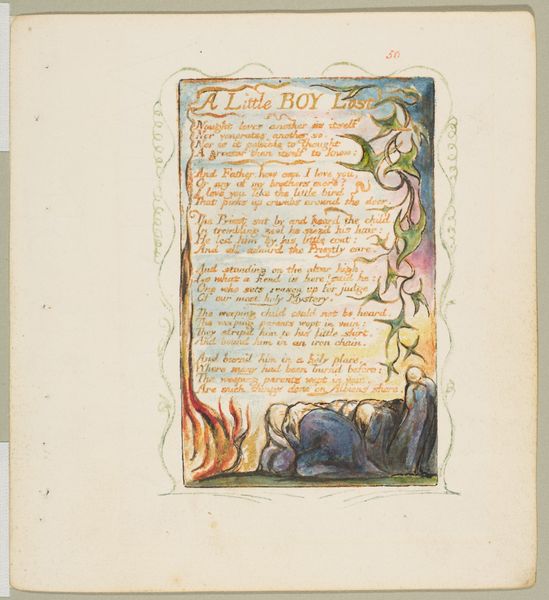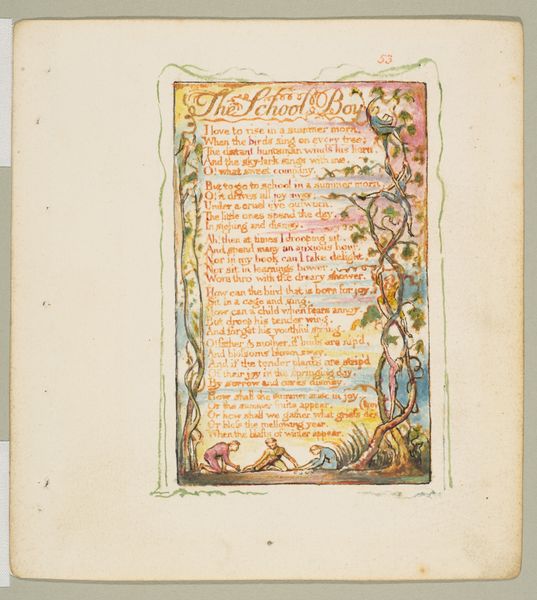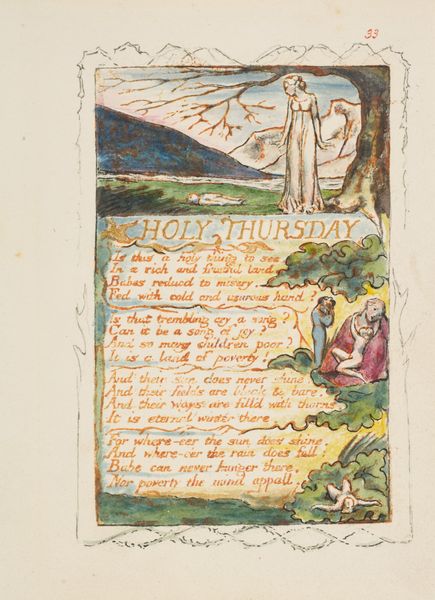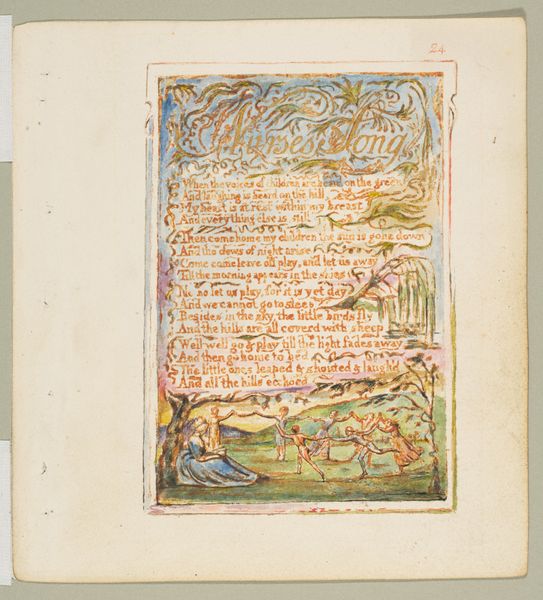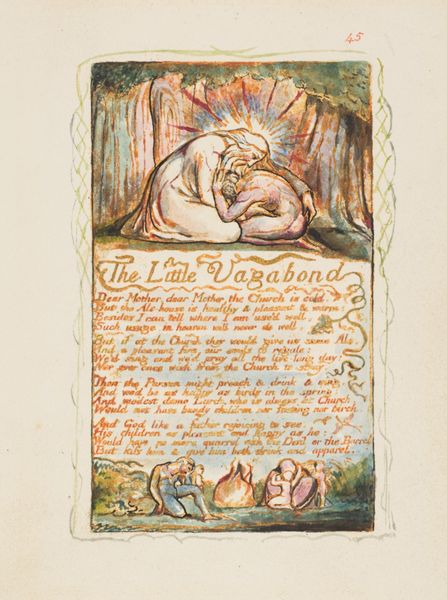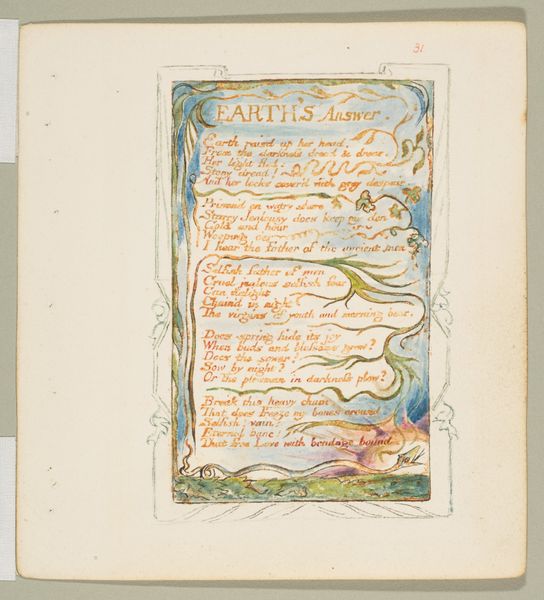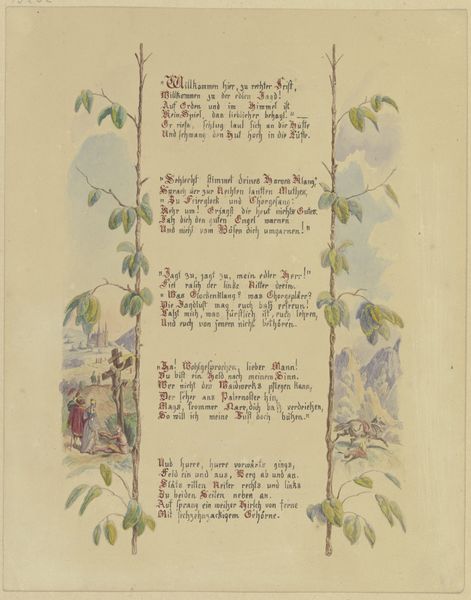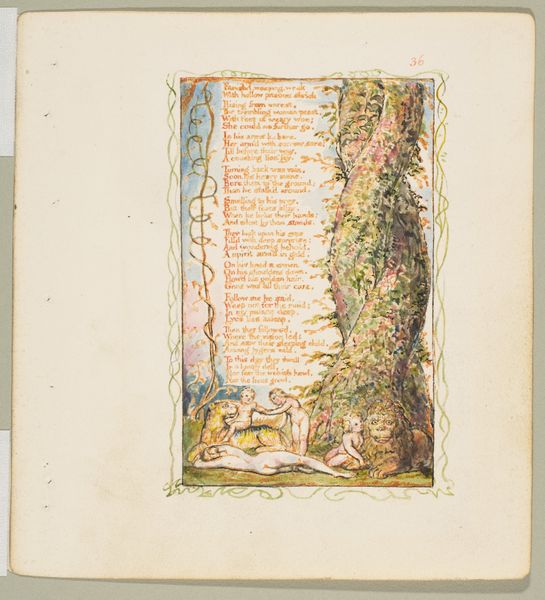
Dimensions: sheet: 6 3/16 x 5 9/16 in. (15.7 x 14.1 cm)
Copyright: Public Domain
Curator: Here we have William Blake's "Songs of Experience: A Poison Tree," likely completed between 1794 and 1825. Executed in watercolor and colored pencil, this artwork seamlessly blends text and image, a hallmark of Blake's illuminated printing. Editor: My initial impression is one of somber beauty. The delicate lines belie a profound sense of unease, almost dread. There is something unnerving in the tension between the lyrical verse and the image of a body lying prone under a stark tree. Curator: The composition certainly reinforces that. Note the division of the page. The poem itself is framed by what appear to be vines or thorns, and below, we see the visual manifestation of its content. Blake's deliberate choice to unite the text with the imagery asks us to consider them inseparable. Editor: Exactly. I find myself drawn to the historical context, understanding how Blake positioned himself as a radical dissenter critiquing institutional power. The poem critiques repressed emotions and revenge, speaking volumes about societal hypocrisy of the time, including how anger and oppression lead to destruction. It’s impossible to ignore that intersectionality. Curator: Perhaps. But consider Blake's handling of color; the pale blues and reds evoke a dreamlike state. It is in this stylized, imaginative space where the symbolism takes root, offering a kind of subjective exploration of the human condition. The stark contrasts accentuate the inherent drama between growth and decay. Editor: True, Blake employs Romantic symbolism, certainly, but that only amplifies its societal critique for me. The poisoned apple represents the insidious nature of pent-up anger, the "foe" being symbolic of all power structures Blake resisted. It transcends personal angst, resonating with broader political implications. Curator: I appreciate how your reading of the work connects directly with concerns about political discourse, as the piece continues to spark conversation on interpretation. It prompts one to explore art from all different dimensions of formalism and beyond. Editor: Ultimately, the piece allows for an active engagement with past struggles in society while highlighting parallels in today's world—art's greatest gift. It helps reveal historical roots of social issues and inspire us toward positive change.
Comments
No comments
Be the first to comment and join the conversation on the ultimate creative platform.
